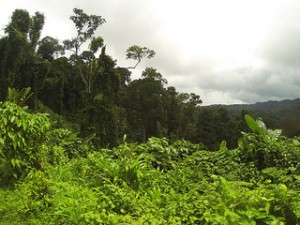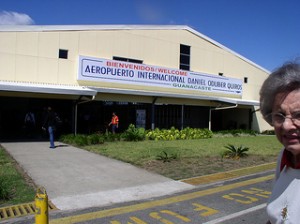 Just as with any industry, positive and negative aspects are created. Ecotourism is no exception to this rule. And while ecotourism presents many benefits, including those for the environment and the local economy, ecotourism can also have a negative impact on a community.
Just as with any industry, positive and negative aspects are created. Ecotourism is no exception to this rule. And while ecotourism presents many benefits, including those for the environment and the local economy, ecotourism can also have a negative impact on a community.
An example of this is the prospective new international airport that is going to be built in Costa Rica on the Osa Peninsula. The Osa is home to one of the most concentrated amounts of biodiversity, with 2.5 percent of the world’s biodiversity “in less than a thousandth of a percent of its total surface area,” according to Osa Conservation.
This new airport has the potential to open the doors of the Osa Peninsula to an outpour of travelers. Rather than people flying to San Jose, the capitol of Costa Rica, and then taking a small plane to their destinations, travelers will have the ability to fly directly to the Osa where hotels and resorts can pick up guests and take them directly to their getaways.
The opening of this airport is a result of the growth of the tourism industry in the area. In a New York Times article by Dylan Walsh, the author addresses the support of the huge project from the national government. President Laura Chinchilla believes that the airport will help “fight poverty and create jobs.” However, there is still a lot of controversy surrounding the project.
To start, the airport will be located “three miles from the Térraba-Sierpe Wetland, a recognized Wetland of International Importance.” Wetlands, according to the Environmental Protection Agency, are critical resources. They “feed downstream waters, trap floodwaters, recharge groundwater supplies, remove pollution, and provide fish and wildlife habitat.” With the development of the airport, this delicate wetland will be more exposed to pollution, and therefore, are at greater risk of being damaged.
Another problem with this airport is that it affects the locals who use the land. According to an article from the Tico Times, the site is owned by government agencies but there are families that live on the land and use it for farming. If the project continues, those families will be forced to relocate. Ecotourism, the reason that this airport is being built, centers on the idea of helping the community. This project is in fact hurting the local community.
Many people are skeptical about the airport because a similar project was attempted in the north of the country, in Liberia, Guanacaste Province. The airport was built in this region because tourism was steadily growing in the area, according to a study on the airport by Luis Morales and Lawrence Pratt. Morales and Pratt say that government officials see the Liberia Airport as one of the driving forces of Guanacaste’s tourism and real estate development.” While these growths are positive for the economy, they are in fact hurtful to the locals. Walsh says that “studies of the area have tied this expansion to social instability from a rapid influx of international real estate investment and an overgrown luxury resort industry.” Jobs at the resorts tend to go to non-locals and the cost of living has risen, while wages have remained the same.
In Hawaii, for example, where tourism has also grown exponentially, a study states that while “wealth has been accumulated from the tourism industry in Hawaii, little to none of these profits have been passed down the chain of stakeholders.” The native Hawaiian population does not get to see any of the money that is being made and, as a result, they “continue to be the poorest, sickest and least educated of all people in Hawaii.” This is a potential risk for all places where tourism has become a huge source of economic growth.
 Ecotourism may be the cause of its own demise.
Ecotourism may be the cause of its own demise.
At the beginning, the benefits of ecotourism may surpass the detriments. However, if governments abuse the economic benefits of ecotourism, thereby abusing nature, they have the potential to destroy the environment as well as create even more hardships for the locals.
Fortunately, there is a difference between the Osa Peninsula and Guanacaste. The Osa Peninsula is known to attract “educated nature lovers” compared to the “light ecotourists” in Liberia, as described by a case study from Stanford University. Hopefully, because of the type of tourist to this specific region, the integrity of the Osa Peninsula will be maintained.
Another benefit to this project is that the government hopes to make it the first green airport, which will contribute, at least in some ways, in protecting the region.
With so much support from the government, it is difficult to say whether or not this project will actually happen. The study at Stanford gives an alternative solution, which is to instead refurbish the already-existing runways, rather than building a multi-million dollar airport.
Occurrences like this airport in Costa Rica will continue to happen all over the world as ecotourism grows into an even larger industry. It is the responsibility of all people involved in ecotourism to control how the land is treated and to ensure equality for the locals. In order to be classified as a true ecolodge, businesses should be required to pay living wages instead of minimum wage in order to help close the poverty gap. And travelers can do their part by boycotting businesses and infrastructure that have the potential to cause more harm than good.